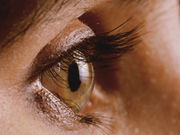Rising trends of EKPE in major centers in Australia; source of sepsis was hepatic abscess in all cases
FRIDAY, Sept. 2, 2016 (HealthDay News) — Increasing trends of endogenous Klebsiella pneumoniae endophthalmitis (EKPE) have been reported in Australia, according to research published online Aug. 26 in Clinical & Experimental Ophthalmology.
Capucine Odouard, M.B.B.S., from Sydney Hospital & Sydney Eye Hospital, and colleagues conducted a retrospective observational case study and case series involving four cases of EKPE.
The researchers noted rising trends of EKPE in major centers in Australia. From January 2011 to December 2015, six eyes of four patients with EKPE were reported (bilateral involvement for two patients). Systemic symptoms were reported up to 10 days before ocular symptoms. In all cases the source of sepsis was a hepatic abscess. Two of the patients had diabetes mellitus. On presentation, five eyes had hypopyon panuveitis. Vitrectomy was performed on all eyes. Enucleation after globe perforation was performed for the patient with the most delayed presentation. In one patient with bilateral EKPE, the final best corrected visual acuity (BCVA) was light perception only; the other three patients had BCVA in at least one eye of at least 6/24.
“EKPE is an emerging condition in Australia. Although rare, EKPE is a sight-threatening and potentially life-threatening emergency that can initially present to ophthalmologists,” the authors write. “One should suspect EKPE in septic patients with a B-scan showing a vitreous or retinal abscess.”
Copyright © 2016 HealthDay. All rights reserved.








